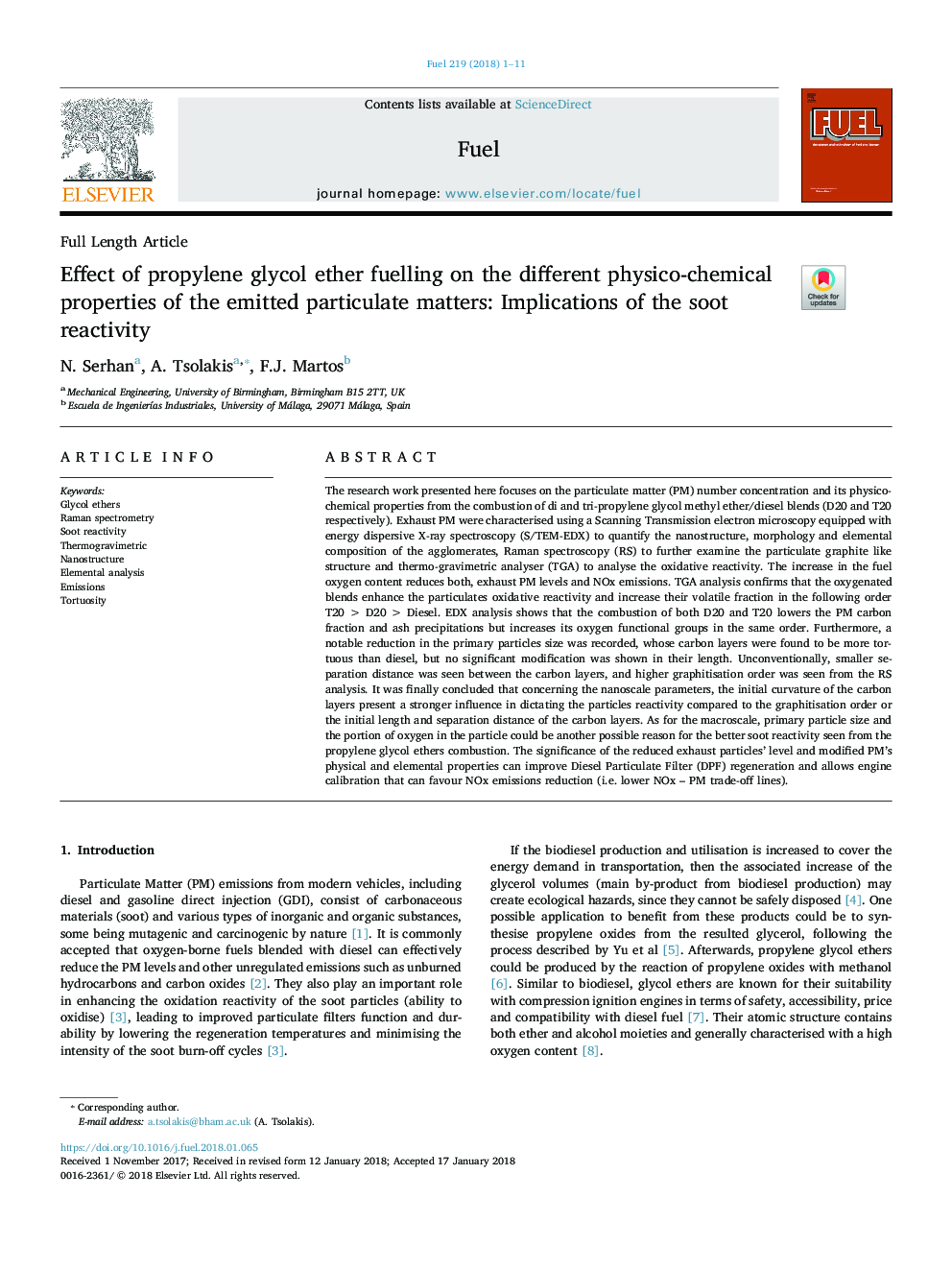| کد مقاله | کد نشریه | سال انتشار | مقاله انگلیسی | نسخه تمام متن |
|---|---|---|---|---|
| 6631791 | 1424945 | 2018 | 11 صفحه PDF | دانلود رایگان |
عنوان انگلیسی مقاله ISI
Effect of propylene glycol ether fuelling on the different physico-chemical properties of the emitted particulate matters: Implications of the soot reactivity
ترجمه فارسی عنوان
اثر پروپیلن گلیکول اتر که بر خواص فیزیکی شیمیایی مختلف مواد ذرات ریخته شده تأثیر می گذارد: پیامدهای واکنش پذیری گرده
دانلود مقاله + سفارش ترجمه
دانلود مقاله ISI انگلیسی
رایگان برای ایرانیان
کلمات کلیدی
اسیدهای گلیکول، طیف سنجی رامان، واکنش پذیری جگر، ترموکوپل نانوساختار، تجزیه و تحلیل عنصری، انتشارات، سرگیجه،
موضوعات مرتبط
مهندسی و علوم پایه
مهندسی شیمی
مهندسی شیمی (عمومی)
چکیده انگلیسی
The research work presented here focuses on the particulate matter (PM) number concentration and its physico-chemical properties from the combustion of di and tri-propylene glycol methyl ether/diesel blends (D20 and T20 respectively). Exhaust PM were characterised using a Scanning Transmission electron microscopy equipped with energy dispersive X-ray spectroscopy (S/TEM-EDX) to quantify the nanostructure, morphology and elemental composition of the agglomerates, Raman spectroscopy (RS) to further examine the particulate graphite like structure and thermo-gravimetric analyser (TGA) to analyse the oxidative reactivity. The increase in the fuel oxygen content reduces both, exhaust PM levels and NOx emissions. TGA analysis confirms that the oxygenated blends enhance the particulates oxidative reactivity and increase their volatile fraction in the following order T20â¯>â¯D20â¯>â¯Diesel. EDX analysis shows that the combustion of both D20 and T20 lowers the PM carbon fraction and ash precipitations but increases its oxygen functional groups in the same order. Furthermore, a notable reduction in the primary particles size was recorded, whose carbon layers were found to be more tortuous than diesel, but no significant modification was shown in their length. Unconventionally, smaller separation distance was seen between the carbon layers, and higher graphitisation order was seen from the RS analysis. It was finally concluded that concerning the nanoscale parameters, the initial curvature of the carbon layers present a stronger influence in dictating the particles reactivity compared to the graphitisation order or the initial length and separation distance of the carbon layers. As for the macroscale, primary particle size and the portion of oxygen in the particle could be another possible reason for the better soot reactivity seen from the propylene glycol ethers combustion. The significance of the reduced exhaust particles' level and modified PM's physical and elemental properties can improve Diesel Particulate Filter (DPF) regeneration and allows engine calibration that can favour NOx emissions reduction (i.e. lower NOx - PM trade-off lines).
ناشر
Database: Elsevier - ScienceDirect (ساینس دایرکت)
Journal: Fuel - Volume 219, 1 May 2018, Pages 1-11
Journal: Fuel - Volume 219, 1 May 2018, Pages 1-11
نویسندگان
N. Serhan, A. Tsolakis, F.J. Martos,
